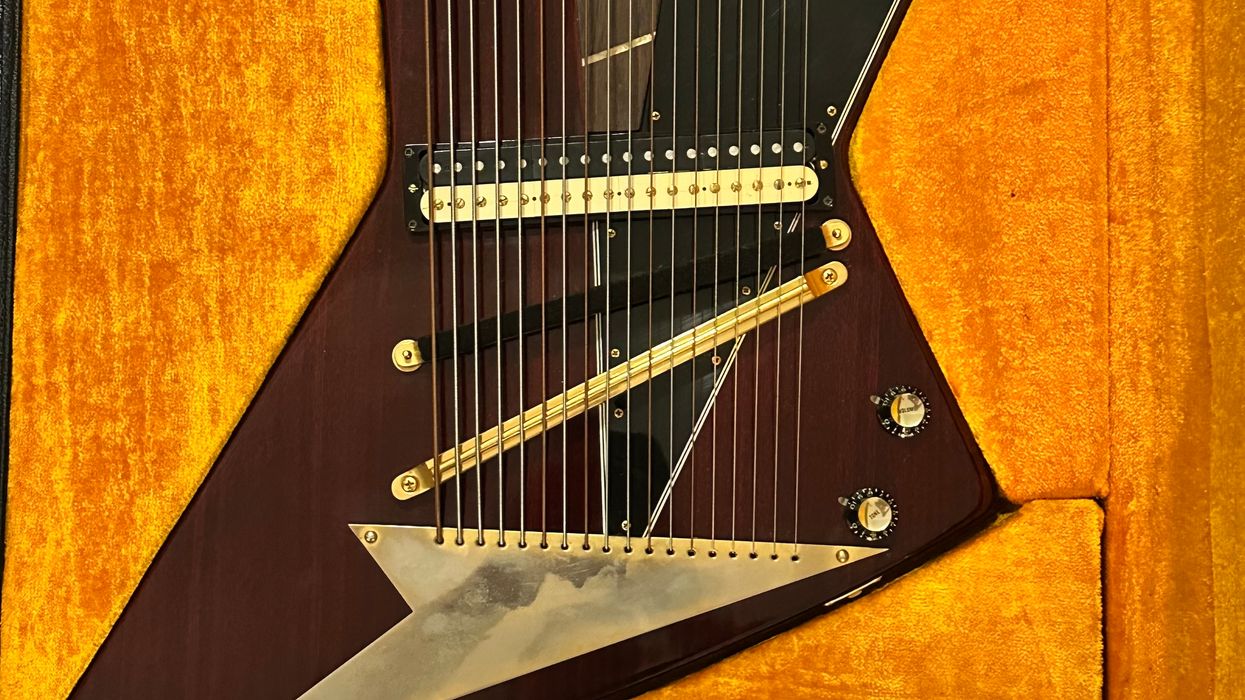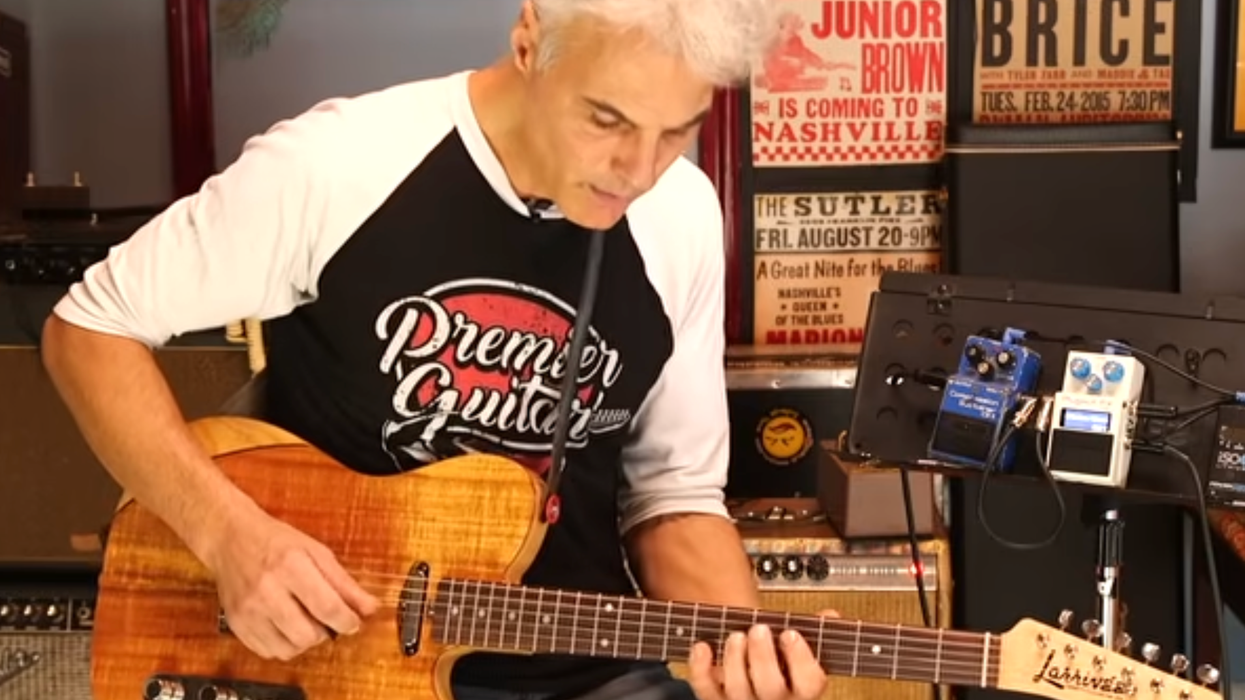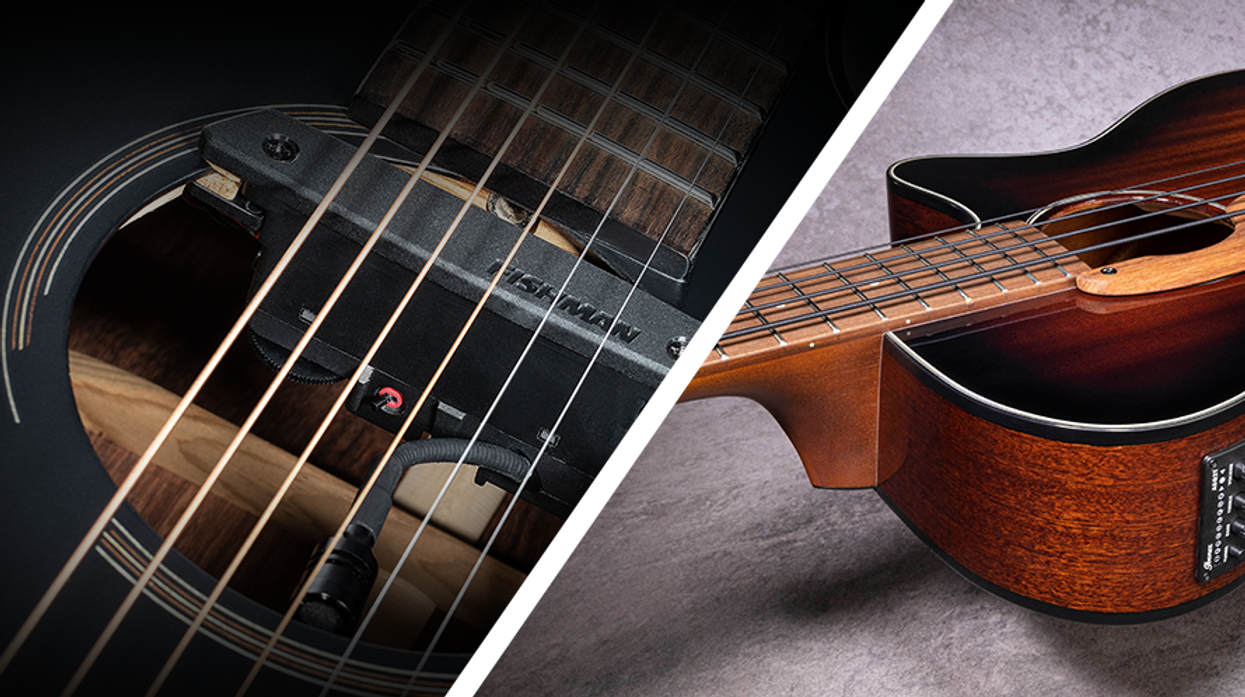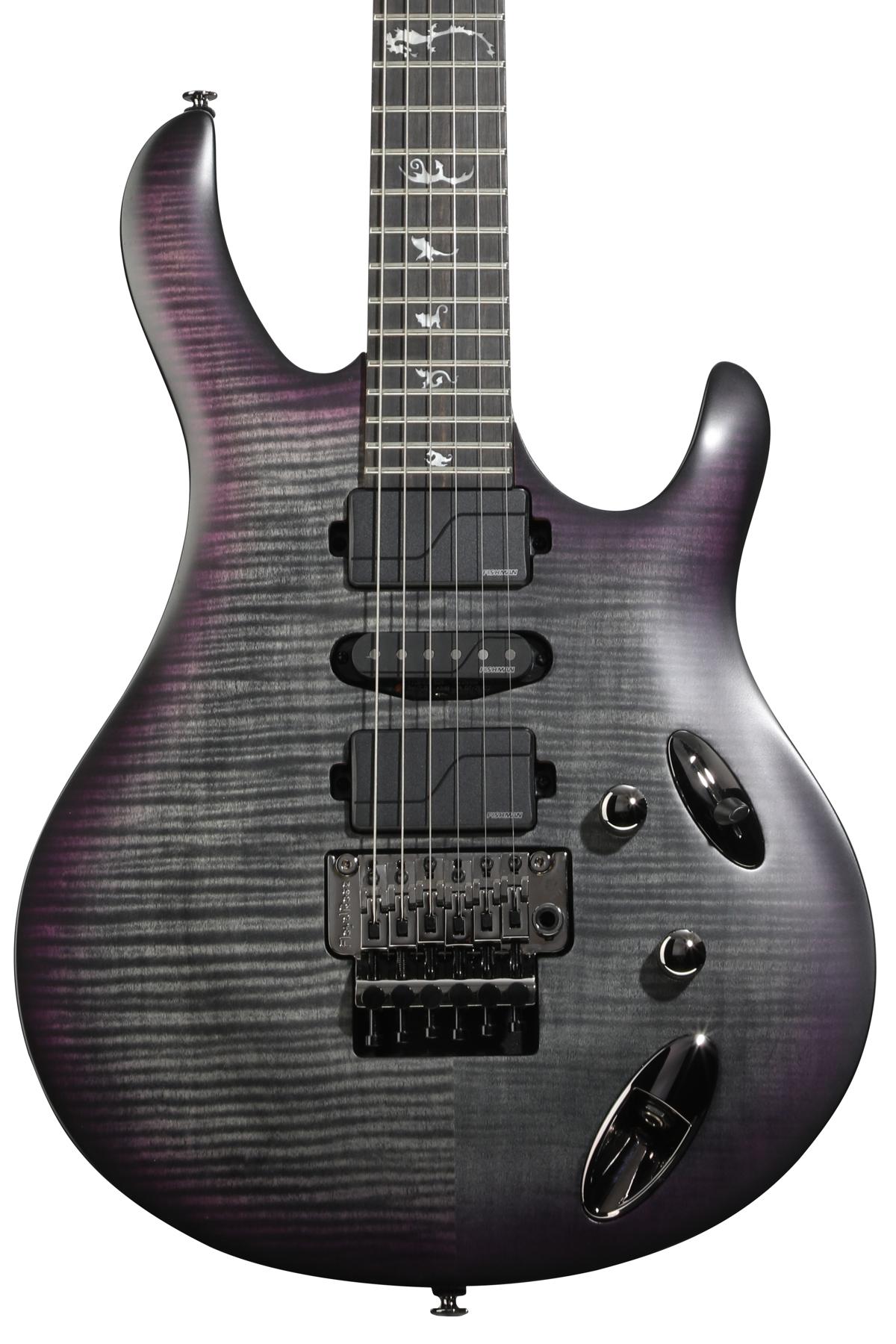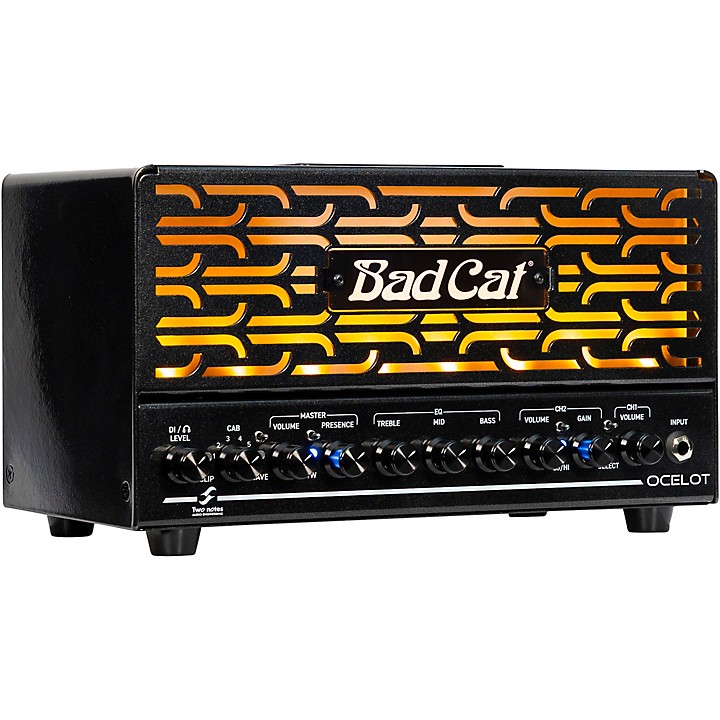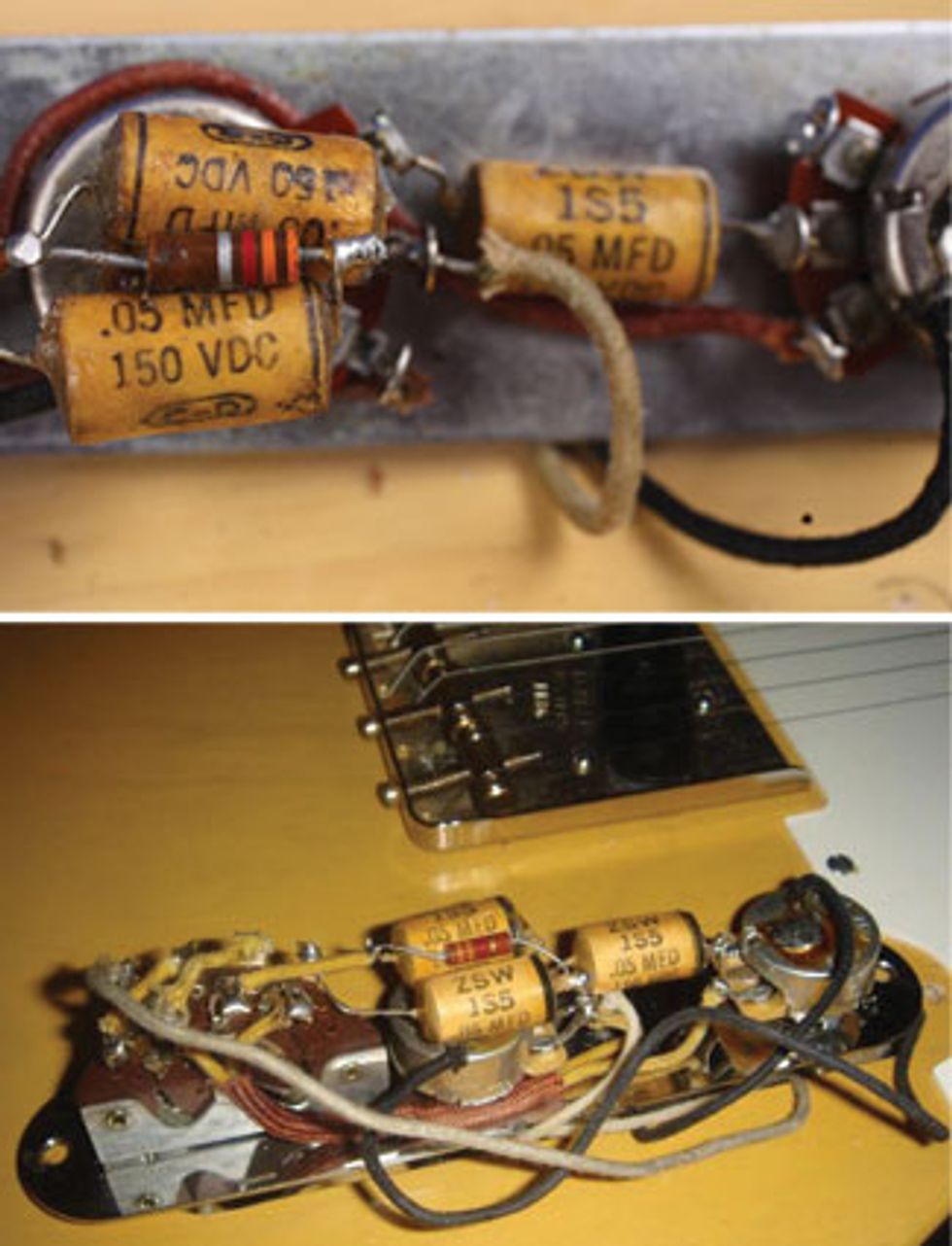
Under the hood of a Fender Esquire: The passive circuitry offers many options for tweaking your sound.
Last month, we began exploring mods for the Fender Esquire—a guitar that's near and dear to my heart [“Esquire Mods, Part 1,"June 2012]. Now let's press forward and look at even more ways we can customize its circuitry.
Previously, we saw that while retaining the stock values of the three capacitors and one resistor Fender used in early-'50s Esquires, we could alter the guitar's sound by trying different brands of these components made from different materials.
But you can also go one step further and change the values of the parts used in the resistor/capacitor network (aka “RC network") itself. To do this, you'll need to understand what the individual parts are doing. One of the three caps is very easy to understand—it's the one connected to the tone pot. As you might guess, this is our standard tone cap, and it's only engaged in switching position #2, when the pickup is running through the volume and tone controls of the Esquire's circuit.
You can use a smaller value for a “lighter" tone control (i.e., one that provides less treble roll-off ) and/or use a different type of cap. Besides an Orange Drop cap, I also like a paper-in-oil cap or a new-old-stock (NOS) ceramic disc in this place. Values from 3300 pF up to 0.1 μF will work—it's simply a matter of personal preference.
The two other caps and the resistor are
directly connected to the 3-way pickup
selector switch and these work together to
serve three different functions:
1. Reduce the volume of the bass tone
to approximately 50 percent to avoid
overloading the guitar amp.
2. Limit the frequency response at
approximately 500 Hz.
3. Shift the resonance peak to approximately
+2 dB at 500 Hz.
In layman's terms, this is very similar to having a fully closed tone control, but without a variable pot to dial in different shades of tone. The fixed cap value has a twist to make it sound closer to a bass guitar.
Personally, I think this is really one of Leo's genius ideas, and one that I'm sure he figured out by trial and error. There are only three parts, yet there's a lot more going on here than meets the eye. The chosen values are perfect for emulating the tone of an acoustic bass with your guitar. Remember, the Esquire circuit was developed before Leo invented the P bass, so the sound of an old “doghouse" upright bass was the tone Leo had in mind.
So what can you do to mod these parts? Let's start with the cap that's connected to the 3-way switch on one side, and to the case (ground) of the volume pot on the other side. This cap, together with the second cap that's connected to the resistor, is creating a so-called “capacitive voltage divider," attenuating the signal. The ratio of these two caps determines the factor of the attenuation. With two 0.05 μF caps, we're attenuating the signal to about 50 percent of the original.
Mod possibility #1: If you make this cap smaller, the signal will be louder and vice versa. NOS ceramic caps, which usually offer tons of harmonic overtones, sound very good in this position.
Now let's have a look at the second 0.05 μF cap, the one connected to the 3.3k resistor on one side and the 3-way switch on the other side. By influencing the resonance peak and the resonance frequency, this combination makes an Esquire sound more like a bass guitar than merely a fully closed guitar tone pot. There are complicated electrical dependencies at work here, but I won't bore you with the equations.
Which brings us to ...
Mod possibility #2: If you make the resistor smaller, the resonance peak will walk up from upright bass to short-scale bass territory, and proceed on to baritone guitar up to the normal guitar ballpark. If you make this resistor larger, the resonance peak will go down to 5-string and further on into 6-string bass territory.
Mod possibility #3: The cap connected to the resistor determines the resonant frequency, or—in simple terms—how dark the tone will be. Making this cap smaller will add more brightness to the tone and vice versa.
So as you see, even with only one pickup, the Esquire offers many possibilities for you to customize your personal tone. Next month, we'll continue with more Esquire modifications and take a close look at the “Eldred wiring" scheme, so stay tuned.
Dirk Wacker lives in
Germany and is fascinated
by anything related to old
Fender guitars and amps.
He plays country, rockabilly,
and surf music in two
bands, works regularly as a
session musician for a local studio, and writes
for several guitar mags. He's also a hardcore
guitar and amp DIY-er who runs an extensive
website—singlecoil.com—on the subject.








![Rig Rundown: Russian Circles’ Mike Sullivan [2025]](https://www.premierguitar.com/media-library/youtube.jpg?id=62303631&width=1245&height=700&quality=70&coordinates=0%2C0%2C0%2C0)






